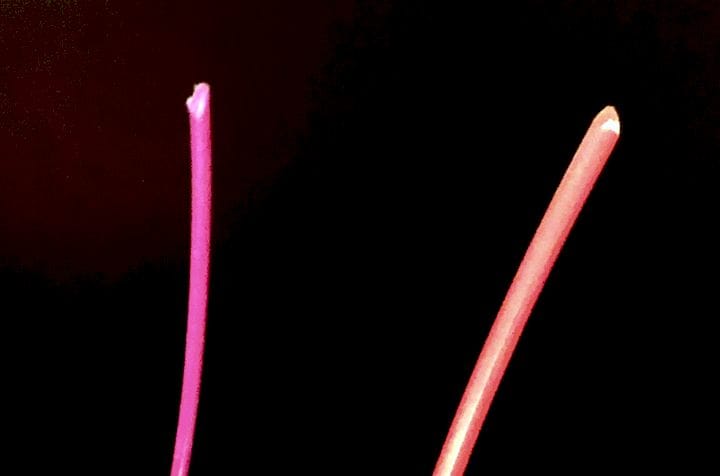![On the left, 1.75mm 3D printer filament; on the right, 2.85mm filament. Or is it? [Source: Fabbaloo]](https://fabbaloo.com/wp-content/uploads/2020/05/image-asset_img_5eb0a84ebe1cd.jpg)
I’ve hit this problem twice now this week: is 3mm filament really 3.00mm?
If you use a 3D printer that uses the larger of the two standard filament diameters, you probably know what I’m talking about.
Filament is sold typically today in one of two diameters: 1.75mm, the more popular standard, and 2.85mm, a thicker size most often used in Bowden 3D printer configurations where a stiffer filament must be used to push the filament through a long route to the hot end.
You’ll notice I said “2.85m” and did not mention “3.00mm”.
But what is 3.00mm filament and where did it come from?
I’m not entirely certain, but my suspicion is that when desktop 3D printers first emerged they were forced to use any readily available materials for 3D printing, simply because there were no manufacturers of 3D printer filament: there was no market yet!
The most commonly available material at the time was 3.00mm ABS “welding wire”. This was a material you could easily obtain anywhere, and thus was a suitable material for manufacturers who were rapidly selling their equipment in many different regions. Even if a 3D printer filament manufacturer sprung up, would they be selling in all the regions a manufacturer had machines? Likely not, at least initially.
So things started with 3.00mm filament. Somewhere along the line it changed to 2.85mm. My suspicion again is that Bowden configurations through which most of the larger diameter filament traveled might have had an inner diameter of also 3.00mm, making for a tight fit. I fondly recall days many years ago trying to squeeze broken filament out of guide tubes, and don’t ever want to do that again.
The industry mostly moved over to the 2.85mm format, where it remains today. This diameter fits easily through 3.00mm tubes and is widely accepted.
But some filament manufacturers still refer to these products as “3.00mm” diameter.
We had a case at the lab where a 3.00mm filament was being used and the 3D printer was over-extruding because there was 10.8% more material reaching the hot end due to the increased diameter.
We had another case where a spool of filament was to be used on a job. But the spool said “3.00mm”. Was it REALLY 3.00mm? Or was it ACTUALLY 2.85mm? Who knows? We had to get the micrometer and measure it.
A vendor recently had a big sale on filament. But upon looking at the listings closely they were labeled as “3.00mm”. Were these spools really 3.00mm and being discounted because no one wants 3.00mm filaments anymore? Or were they actually 2.85mm filaments that were on sale at a truly good price? You can’t measure those until you buy them.
In another instance a vendor recently contacted us to correct a press release where they had mistakenly listed their 2.85mm filament as 3.00mm filament, apparently having done this routinely for years.
I think quite a few 3D printer filament vendors still do this.
My advice: Stop That!
If you are selling 2.85mm filament, say so.
If you are selling 3.00mm for some unexplainable reason, say so.
If you are selling ANY filament be sure you label it with the diameter – and make sure it is correct!
Thank you.











New research could result in the availability of UV-resistant biopolymers.